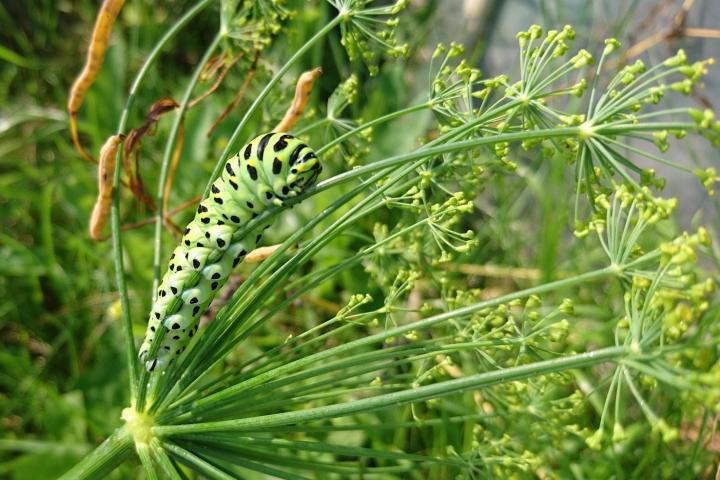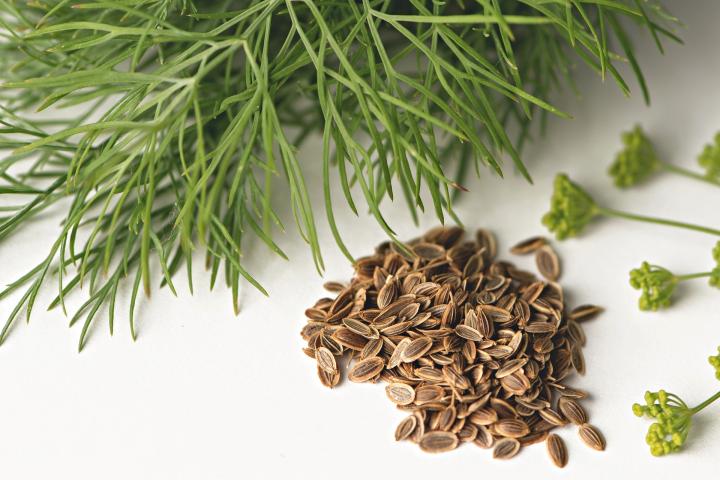
Learn how to plant, grow, and harvest dill with The Old Farmer’s Almanac’s plant guide.
Sign up for our daily newsletter to get gardening tips and advice.
Planting, Growing, and Harvesting Dill
Many people love to make dill pickles with their fresh dill. Learn how with our video on making dill pickles. You can also add dill as a seasoning in countless recipes.
ADVERTISEMENT
I'm in Zone 5, coastal Maine. I had a fabulous crop of dill this year... but, it's time for garden clean-up. I'm wondering if I should just cut down my dill to ground level, or uproot them completely.
I've read dill has a long taproot. Will this benefit the soil if left in place or compete for space next season?
Thanks for your advice!
Hi, Ora. That’s great that you had such a dill-icious year! If you leave your plants undisturbed, you will get more dill next year, though not the same plants. Dill naturally self seeds, so leaving flower heads on your plants will encourage new plants next growing season.
I put my dill seeds in egg cartons will they start to grow still ?
Hi, Donna. It sounds like you stored your dill seeds in egg cartons, not that you have started your dill seeds in egg cartons. Checking to see if your seeds are still good is as easy as placing ten seeds on a damp paper towel, folding it up, and placing it in a plastic bag. Put the bag in a warm spot and check after a week or so to see if any of the seeds have sprouted. If 2 out of 10 germinate, that means a germination rate of about 20%—not very good, so either plant more of them than usual or buy fresh seeds altogether. If 8 out of 10 germinate, that means 80%—not bad at all! You can likely get away with using them for another season.
How does one dry dill and store
Hang the foliage in a warm, well-ventilated place out of direct sunlight. Once totally dry, the foliage should crumble easily; store it in herb jar or the like.
I tried growing dill for the first time this year; I planted it in an herb box where I have had success with other herbs for many years. It is in a sunny location, but the first drenching rain seems to have killed the dill! After the rain, there was one healthy-looking stalk and I transplanted it to a terracotta pot to keep it drier but it is clearly very unhappy... what is the secret to growing dill? Any ideas as to why this plant doesn't seem to do well?
Hi, Jolie, The drenching rain you cite probably did it in, causing root rot. It’s likely that the soil in the pot did not drain well—and/or the pot simply was not deep enough. Most varieties of dill create long tap roots that need space to stretch out. The transplant may have suffered from being moved. Think of it: being uprooted and resettled is a traumatic readjustment for any plant (or person) and not all survive. In future, provide a deep pot, rich (composted) well-draining soil (the pot material should not make a significant difference if all else is suitable), and give it 6 to 7 hours of direct sun (indoors, give is a south- or west-facing window). Indoors in part sun, water only when soil dries out; outdoors, especially in hot environments, regular moisture is the rule.
I plant dill every year in perpetual hope. Every year it grows beautifully. And then I come out on a morning to find something has eaten the roots. I've moved location, type of pot, sprinkled egg shells around it. I have never caught a glimpse of what eats the roots, even with a camera. Any suggestions on how to keep something from eating my dill?
It could be a vole. They go after the roots of all kinds of plants. I am currently having problems with voles in my yard. I have a hill side of junipers that gives them cover. I would think that a pot would keep them away.











